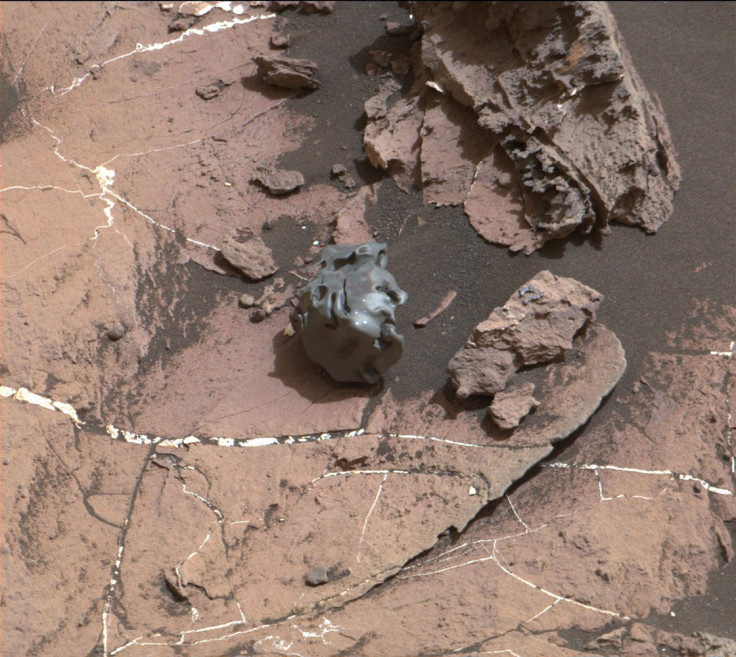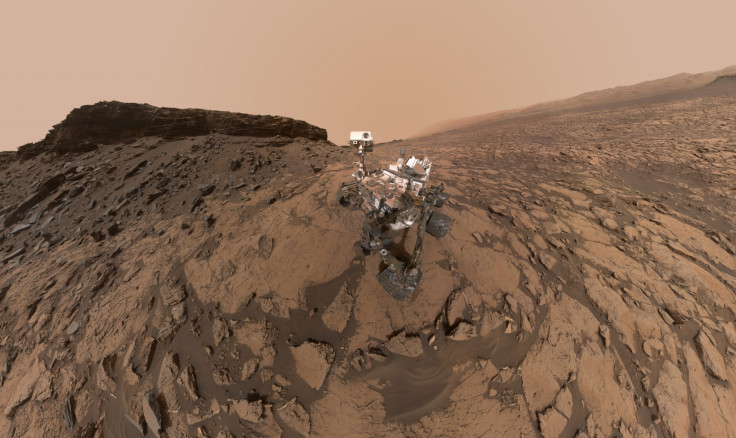Weird-looking lumpy metallic space rock found on Mars
The odd-looking lump has been named Egg Rock and is made of iron and nickel.

Nasa's Curiosity rover has used its lasers to find out what a Martian meteorite was made of for the first time.
Scientists at the Mars Science Laboratory, which operates Curiosity, saw the metallic globule using a camera mounted on the rover called Mastcam, Nasa says. The rover came across the golf-ball-sized meteorite last week and used its ChemCam instrument to analyse it.
Using a grid of laser beams to gather information on the chemical make-up of Egg Rock, the rover measured the light that returned to a sensor on 30 October, Nasa announced yesterday (2 November). The material reflects the light according to its chemical make-up, giving it a unique signature. The laser burned through the rock surface to return some information on the meteorite's interior.
From this information, the Mars Science Laboratory team can identify what the meteorite is made of: mainly a mixture of iron, nickel and phosphorus, Nasa says. Some laser beams picked up evidence of combinations of nickel and phosphorus, suggesting the presence of a rare iron-nickel-phosphide mineral that isn't often found outside iron-nickel meteorites, the researchers say.
"The dark, smooth and lustrous aspect of this target, and its sort of spherical shape attracted the attention of some Mars Science Laboratory scientists when we received the Mastcam images at the new location," says ChemCam team member Pierre-Yves Meslin, of the University of Toulouse, France, and the Research Institute in Astrophysics and Planetology at France's National Centre for Scientific Research.

"Iron meteorites provide records of many different asteroids that broke up, with fragments of their cores ending up on Earth and on Mars," says Horton Newsom of the University of New Mexico in the US, also on the ChemCam team. "Mars may have sampled a different population of asteroids than Earth has.

The images shown above have been coloured to show Egg Rock as it would appear if it were seen in daylight on Earth. Nine white spots are visible on the image marking the points where the laser beams struck the meteorite.

© Copyright IBTimes 2025. All rights reserved.






















